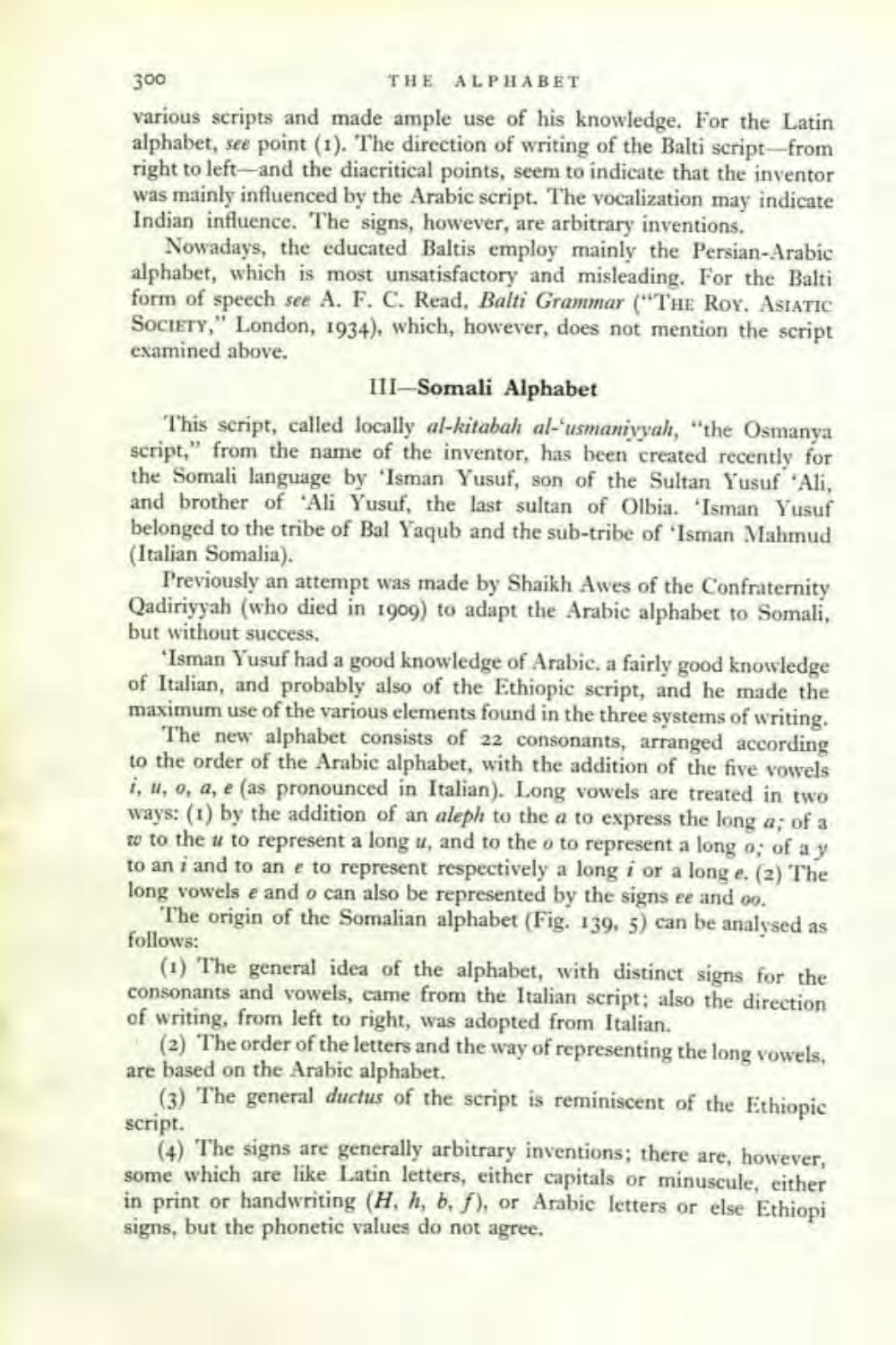________________
300
THE ALPHABET
various scripts and made ample use of his knowledge. For the Latin alphabet, see point (1). The direction of writing of the Balti script-from right to left-and the diacritical points, seem to indicate that the inventor was mainly influenced by the Arabic script. The vocalization may indicate Indian influence. The signs, however, are arbitrary inventions.
Nowadays, the educated Baltis employ mainly the Persian-Arabic alphabet, which is most unsatisfactory and misleading. For the Balti form of speech see A. F. C. Read, Balti Grammar ("THE ROY. ASIATIC SOCIETY," London, 1934), which, however, does not mention the script examined above.
III-Somali Alphabet
This script, called locally al-kitabah al-'usmaniyyah, "the Osmanya script," from the name of the inventor, has been created recently for the Somali language by 'Isman Yusuf, son of the Sultan Yusuf 'Ali, and brother of Ali Yusuf, the last sultan of Olbia. 'Isman Yusuf belonged to the tribe of Bal Yaqub and the sub-tribe of 'Isman Mahmud (Italian Somalia).
Previously an attempt was made by Shaikh Awes of the Confraternity Qadiriyyah (who died in 1909) to adapt the Arabic alphabet to Somali, but without success.
Isman Yusuf had a good knowledge of Arabic, a fairly good knowledge of Italian, and probably also of the Ethiopic script, and he made the maximum use of the various elements found in the three systems of writing.
The new alphabet consists of 22 consonants, arranged according to the order of the Arabic alphabet, with the addition of the five vowels i, u, o, a, e (as pronounced in Italian). Long vowels are treated in two ways: (1) by the addition of an aleph to the a to express the long a; of a w to the u to represent a long u, and to the o to represent a long o; of a y to an i and to an e to represent respectively a long i or a long e. (2) The long vowels e and o can also be represented by the signs ee and oo.
The origin of the Somalian alphabet (Fig. 139, 5) can be analysed as
follows:
(1) The general idea of the alphabet, with distinct signs for the consonants and vowels, came from the Italian script; also the direction of writing, from left to right, was adopted from Italian.
(2) The order of the letters and the way of representing the long vowels, are based on the Arabic alphabet.
(3) The general ductus of the script is reminiscent of the Ethiopic script.
(4) The signs are generally arbitrary inventions; there are, however, some which are like Latin letters, either capitals or minuscule, either in print or handwriting (H, h, b, f), or Arabic letters or else Ethiopi signs, but the phonetic values do not agree.




